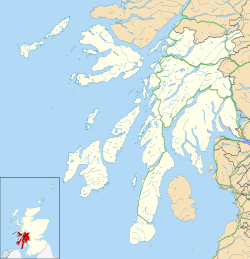| Ardtaraig | |
|---|---|
 Loch Striven - geograph.org.uk - 572652 | |
Location within Argyll and Bute | |
| OS grid reference | NS 05856 82680 |
| Council area |
|
| Lieutenancy area |
|
| Country | Scotland |
| Sovereign state | United Kingdom |
| Post town | DUNOON, ARGYLL |
| Postcode district | PA23 |
| Dialling code | 01369 |
| UK Parliament |
|
| Scottish Parliament |
|
Ardtaraig is a hamlet lying at the head of Loch Striven on the Cowal Peninsula, in Argyll and Bute, West of Scotland. The hamlet is on the single track B836 road. [1]


